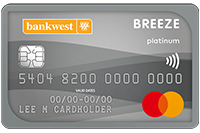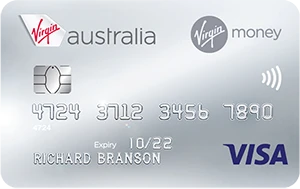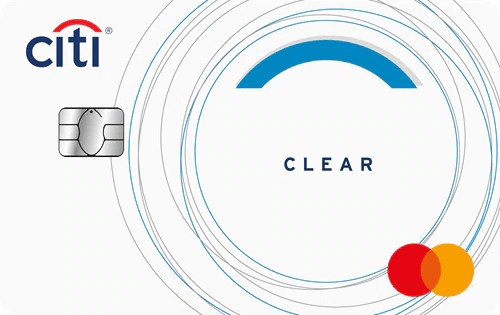How to make credit card balance transfers work for you
Savrr.com is a trading name of Fair Comparison Pty Ltd. Comparison tables are powered by Fair Comparison Pty Ltd who do not compare every provider in the market, or all products from the displayed providers. Fair Comparison Pty Ltd does not give recommendations, advice or credit assistance and may receive a fee if you, apply, click through, or successfully qualify, for a product displayed.
Learn More
Transferring your credit card balance can be a great way to reduce the overall cost of a credit card and manage credit card payments more efficiently — if you do it well. Our handy guide could help make credit card transfers work better for you.
What is a balance transfer credit card?
A balance transfer credit card could enable you to pay off your debt faster by consolidating several credit card debts onto one card or allowing you to reduce the interest rate on the balance owing.
Cards with this feature often offer an interest-free period or an introductory period with a low interest rate available for a limited time.
The idea of using a balance transfer to consolidate and pay down debt is useful if you can pay off the transferred balance in full by the end of the interest-free or low-rate period, helping you save some money.
However, if you can’t meet that timeline, it could end up increasing the amount of money you owe, depending on the terms of the card.
How to make balance transfers work for you
Balance transfers can be an effective tool for reducing or eliminating credit card debt. But if you don’t use them well, they can end up costing you more than if you hadn’t changed anything.
Thankfully, there are several steps you can follow which could help ensure a balance transfer works for you:
Cancel your existing cards. If you don’t cancel your existing cards, you may end up paying fees for a card you’re not using. Or worse, you may end up shopping with the old card(s), racking up more debt and defeating the purpose of the balance transfer.
Avoid buying anything on the balance transfer card. These cards often have a low introductory balance transfer rate or offer an initial interest-free period for balance transfers. But once the introductory period ends the standard interest rate applies. So, if you shop with your new balance transfer card, you’ll reduce the chances you’ll be able to pay off your entire debt within the initial promotional period.
The second reason is that many balance transfer cards offer a low balance transfer rate and a far higher interest rate for new purchases (often called the purchase rate. So, you might think you’re getting a great deal and lowering your interest commitment, but instead you may end up having to pay far more interest. Plus, when you make your repayments, they’ll also go towards paying off your new-purchase balance, leaving you stuck with elevated interest rates and a higher balance if you don’t pay off the debt before the end of the introductory period.

Repay your credit and pay your interest by the due date. Even if you don’t buy anything else with your new balance transfer card, and cancel your old cards, you still run the risk of having to pay a higher rate of interest if you don’t repay your entire debt by the time the introductory period ends. Introductory balance transfer rates typically last for around six months to two years, after which the card could essentially become a high-rate credit card. So, it’s worth doing the maths before applying for a card to ensure you’ll be able to pay off your entire debt within the introductory time frame.
Protect your credit score by limiting credit card applications. This might mean you wait before applying for any more credit after you get a balance transfer card. Why? Well, every time you apply for a new credit card or do a balance transfer, that information will be recorded in your credit report. If you do either of those things too many times in a short period of time, your credit score may be impacted. That could make it harder for you to get another card or other kind of loan (such as a personal loan, home loan or car loan for a while. It could also potentially increase the interest rate you’ll have to pay for future loans.
Be prepared and seek advice. Seeking some professional advice can help you get prepared to pay down the debt. If it’s not going to be possible for you to pay off your entire debt by the end of the introductory period, they may advise to look for a card with a longer introductory period. If that still won’t enable you to pay off your debt before you’re hit with the standard interest rate, they can help you to calculate whether it would be cheaper in the long run to stick with your current card.
In addition to these steps, it’s also helpful to go into this kind of decision armed with two more bits of information.
Know how much you can transfer
Some cards will have a limit to the amount of debt they’ll allow you to transfer. If the limit isn’t enough to allow you to transfer all your card debt onto the balance transfer card, you may end up having to pay interest and fees on multiple card balances. That might cancel out any benefits you could receive from having a balance transfer card.
That doesn’t necessarily mean you can’t make great use of a balance transfer card, as there may be some cards that have a high enough limit for your needs. It does mean you’ll need to carefully consider all the features and limitations of each card. So don’t forget to examine the card terms and conditions carefully!
Compare balance transfer rates
It may sound obvious because you’re no doubt keen to get the lowest rate for the actual balance transfer you’re going to do. But we don’t just mean compare balance transfer rates to each other. We also mean compare the balance transfer rate in the context of the other rates and fees also being charged, because the lowest balance transfer rate may not necessarily result in the lowest overall cost of the card.

ANZ - Low Rate Credit Card
Balance Transfer offer
Balance Transfer
3% BT fee applies.
Balance Transfer Fee

Bankwest - Breeze Classic Mastercard
Balance Transfer
3% BT fee applies.
Balance Transfer Fee

Bankwest - Breeze Platinum Mastercard
Balance Transfer
3% BT fee applies.
Balance Transfer Fee

Virgin Money Australia - Virgin Australia Velocity Flyer Credit Card
Balance Transfer Offer
Balance Transfer
1% BT fee applies. No interest free days apply to retail purchases while you have a Balance Transfer
Balance Transfer Fee

Citi - Clear Credit Card
Balance Transfer offer
Balance Transfer
3% BT fee applies.
Balance Transfer Fee
Common balance transfer fees and limitations
Here’s a summary of common fees, interest charges and limitations you’ll likely find listed in the terms and conditions of a balance transfer credit card:
- Balance transfer rate — It’s important to check how much this interest rate is, as well as when it starts and how long it lasts (how long the transfer period can be)
- Balance transfer limit — This is the maximum balance you’ll be allowed to transfer onto the card, and it’s usually expressed as a percentage (rarely 100%) of the credit limit the lender is willing to offer you (there may also be a minimum amount you can transfer)
- Purchase rate — This is the interest rate you’ll be charged when you buy anything with the card, and it may start immediately or after the transfer period
- Cash advance rate — This is the interest rate you’ll be charged if you withdraw credit as cash from an ATM, transfer it to another bank account or pay for a small number of other transactions with the card (such as gambling transactions)
- Interest-free days — Some balance transfer cards offer an interest-free period for purchases, and some offer this feature from the beginning while others only offer it once you’ve paid off the amount you transferred to the card
- Rewards program — Some balance transfer cards offer a rewards program with associated fees
- Annual fee — Many balance transfer cards charge annual fees, but not all charge their fee from the moment your card is issued
- Other fees — Many balance transfer cards may also charge additional fees such as:
- An administration fee to do the balance transfer
- A late payment fee if you don’t pay your compulsory repayments on time
- A cash advance fee if you withdraw credit as cash from an ATM or by transferring it into a bank account (this is on top of the higher cash advance interest rate)
- An over limit fee if you spend more credit than you’ve been approved for (those cards that don’t charge this will generally just decline the transaction)
- A foreign transaction fee if you use the card overseas or with an overseas merchant (which you might do when shopping online, as an example) you might be charged a foreign transaction fee
How long does a balance transfer take?
When you do a balance transfer, you don’t pay off your existing credit card debt with your new card. Instead, your new card issuer will organise for your balance to be removed from your existing credit card account and added to your new credit card account. (Card issuers won’t close any accounts for you, though.) As a result, the transfer is unlikely to be instantaneous.
In most cases, a balance transfer will take between five and 21 business days.
Just be aware that the balance transfer period doesn’t start when you receive your card. It starts when your account is approved, which might be a week or more before you actually receive your card.
How to choose a balance transfer card
Choosing a suitable balance transfer card is often about weighing up pros and cons of different cards. To help you with the process, we’ve put together a dedicated guide that details, step-by-step, questions to ask to help you compare balance transfer credit cards.
It also includes a range of balance transfer cards to compare right now, so can save you heaps of research time!